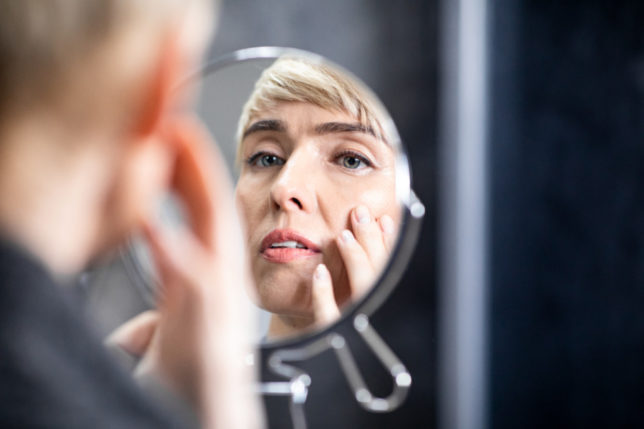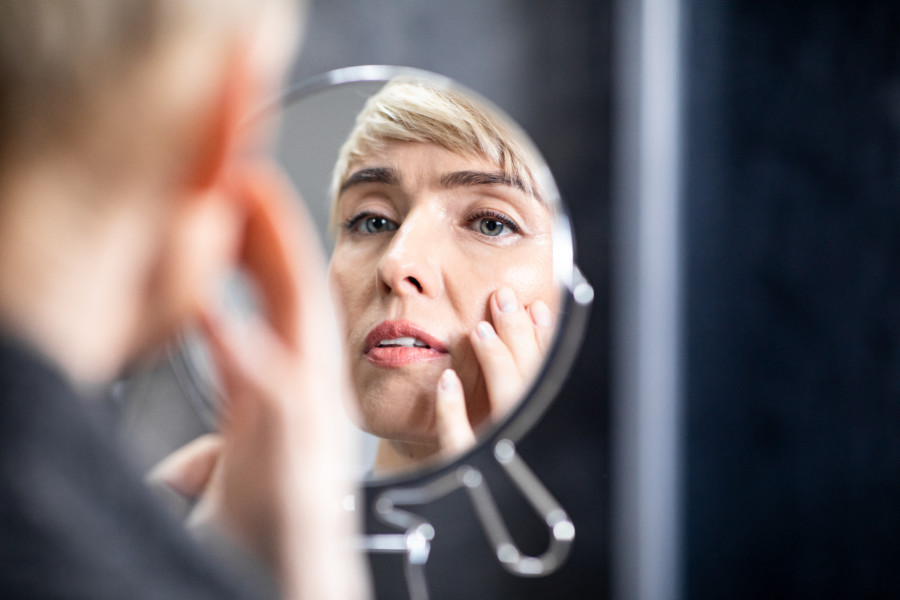From genetics to allergies to lack of sleep, the skin under your eyes tells all. But there are strategies that can help, even if it’s a family trait. Harley Street’s Dr Sabrina Shah-Desai, Ophthalmic Plastic Reconstructive and Cosmetic Surgeon voted one of the 100 most influential aesthetic practitioners, tells SLOAN! what the wrinkles around the eyes say about you and how to treat them.

Crow’s Feet
A combination of thin, vulnerable skin and repeated movements make the area at the side of our eyes prone to developing deep lines or ‘crow’s feet’.
The muscle around our eyes, called orbicularis oculi, contracts involuntarily when you laugh, smile, concentrate or soften your eyes in empathy. This motion naturally leads to expression lines and crinkles, which initially disappear quickly, but as collagen levels in our skin deplete with age so does skin’s ability to bounce back.
A broad-spectrum SPF is crucial in the fight to prevent line causing and collagen-degrading sun damage. Apply it regularly throughout the day – whatever the weather.
A good hyaluronic acid also works well when applied topically in creams and serums on problem areas like crow’s feet. It strengthens the skin’s barrier to keep hold of hydration and effectively plumps and smooths out lines.
For an instantly visible result, a sprinkling of anti-wrinkle injections can minimise the wrinkles by temporarily relaxing line-forming muscles for up to three months. The procedure takes around ten minute treatments and results are seen within three days. It’s important to always go to a medical professional with adequate training to stay safe and achieve the best results.
Dark Circles
The under-eye area is one of the thinner areas of skin on the face and is easily neglected in basic skin care. There is also a strong genetic component to dark circles, which is, to a point, out of people’s control. But even if it doesn’t run in your family, they can show up as a result of fatigue, stress, allergies, dehydration, sun damage, and even a bit of a visual trick thanks to hollowing cheekbones and eyelids.
Iron deficiency is another reason you might have dark circles. Combat iron deficiency with vitamin B12 and foods including red meat, pork, poultry, seafood, beans, spinach, raisins, apricots, and peas.
Cigarette smoke is known to cause dark circles and damage the delicate skin around the eyes. In addition to all the other benefits you’ll reap from stopping smoking, you’ll also have healthier, happier, brighter eyes.
With repeated use, retinoids can help rebuild dermal collagen and contribute to vascular support in the area and the recovery of skin volume and firmness.
For dark circles that are caused by increased pigment, topical lightening agents such as vitamin C can help decrease skin pigmentation over time, ultimately resulting in the lightening of the dark circles.
Tear trough fillers are an effective way to treat dark circles under the eyes and under-eye hollows. By injecting filler under the eyes, we fill the volume lost by ageing – lightening dark circles, filling under eye hollows and wrinkles. This treatment also improves skin quality by boosting collagen production and hydrating skin from the inside. However, it is absolutely vital that you do your research and go to a practitioner who has adequate knowledge of the intricate anatomy on the face. An unqualified practitioner can cause great harm with risks associated including skin necrosis and blindness.
Puffy Eyes
The circulation around the eyes is more predisposed to fluid retention as you age and you also lose elastin in the skin, resulting in sagging and wrinkling. This can puff up the under-eye area and make this area look darker. As the skin stretches to accommodate fluid and inflammation, gravity can pull those bags downward, making them more pronounced.
Other factors that can cause puffy eyes include allergies, dry skin, and dehydration.
Keeping your pillow protected from allergens (dust and dust mites) with a protective encasement can also help when allergies are the culprit.
Excess salt can also mean that you retain excess fluid under your eyes. Ridding your diet of excess sodium can help combat bags under your eyes.
If your puffiness and darkness is related to loss of under-eye fat, one option is hyaluronic fillers. Carefully injected fillers can replace volume where the fat once was, and can create a smoother, more opaque surface over the underlying blood vessels.
Surgery is another option. By removing or repositioning the under-eye fat pads without a scar on the skin (transconjunctival blepharoplasty) or tightening the skin with a small skin pinch blepharoplasty that leaves a fine scar, that is hidden in the “smile crinkles” of the outer corner of the eyelid. Patients see a long lasting visible result. Downtime and pain for this procedure tends to be minimal.
About the expert
 Dr Sabrina Shah-Desai is a leading Ophthalmic Plastic Reconstructive and Cosmetic Surgeon based on Harley Street in the UK. She is internationally recognised as an expert in non-surgical and technologically advanced cosmetic treatments, being voted as one of the 100 most influential aesthetic practitioners in 2019. With over 20 years of clinical experience combining the micro-precision of eye-lid surgery, with the aesthetic concepts of facial plastic surgery, Dr. Shah-Desai is considered the ‘go-to’ expert by patients seeking natural looking bespoke eyelid and facial rejuvenation.
Dr Sabrina Shah-Desai is a leading Ophthalmic Plastic Reconstructive and Cosmetic Surgeon based on Harley Street in the UK. She is internationally recognised as an expert in non-surgical and technologically advanced cosmetic treatments, being voted as one of the 100 most influential aesthetic practitioners in 2019. With over 20 years of clinical experience combining the micro-precision of eye-lid surgery, with the aesthetic concepts of facial plastic surgery, Dr. Shah-Desai is considered the ‘go-to’ expert by patients seeking natural looking bespoke eyelid and facial rejuvenation.

